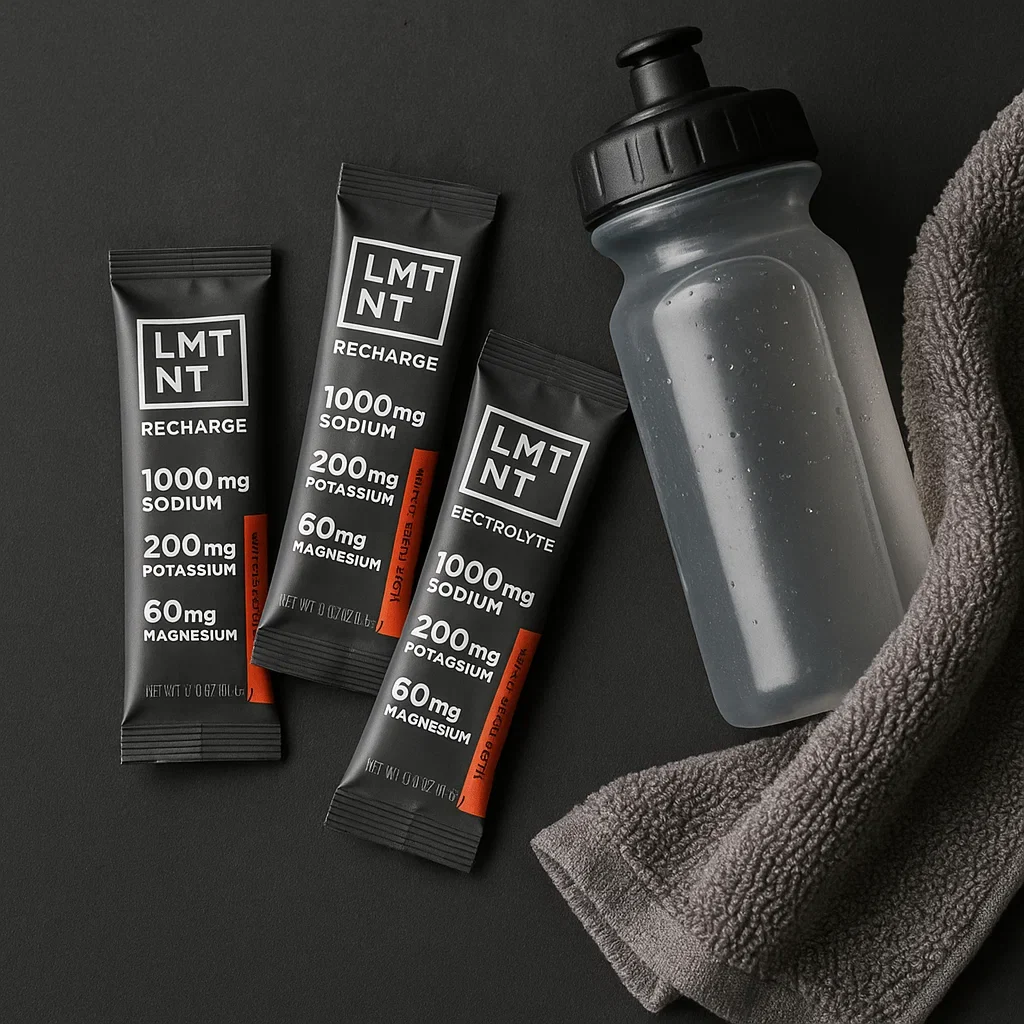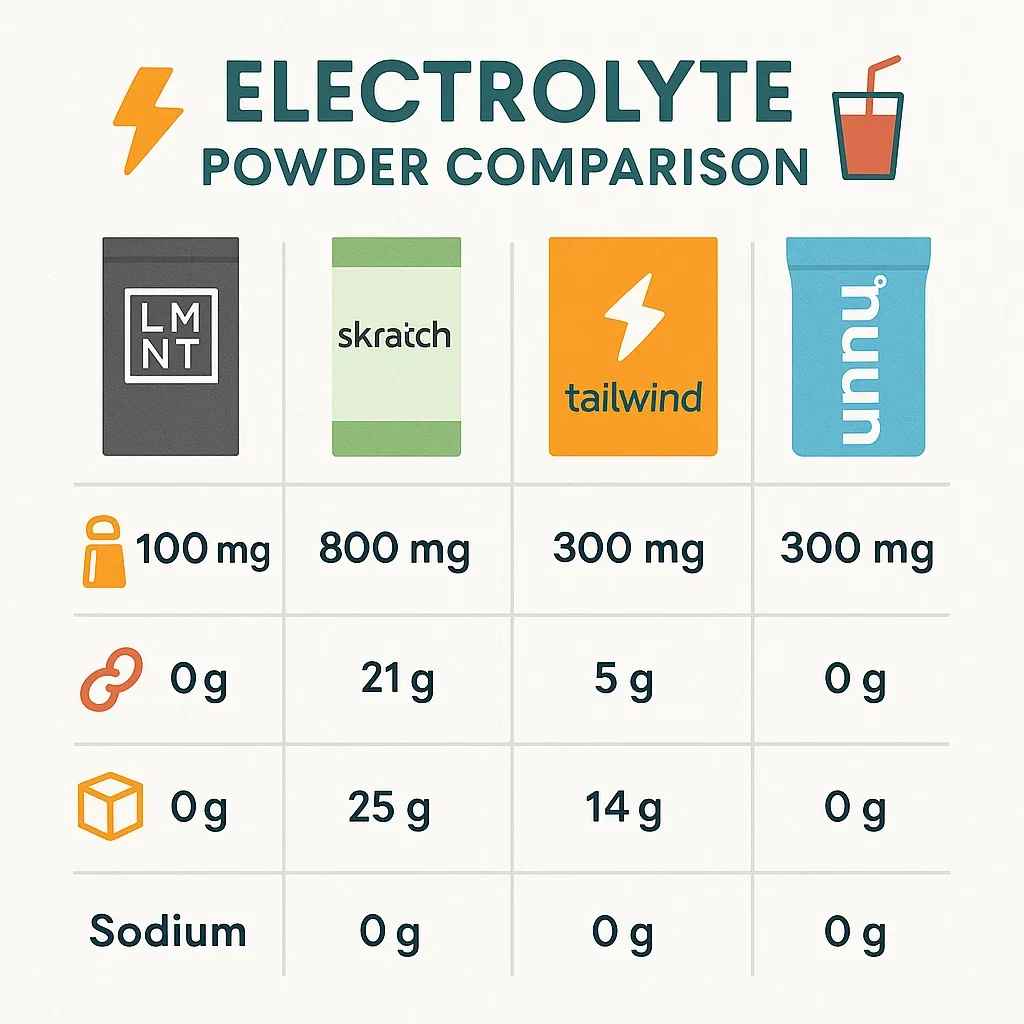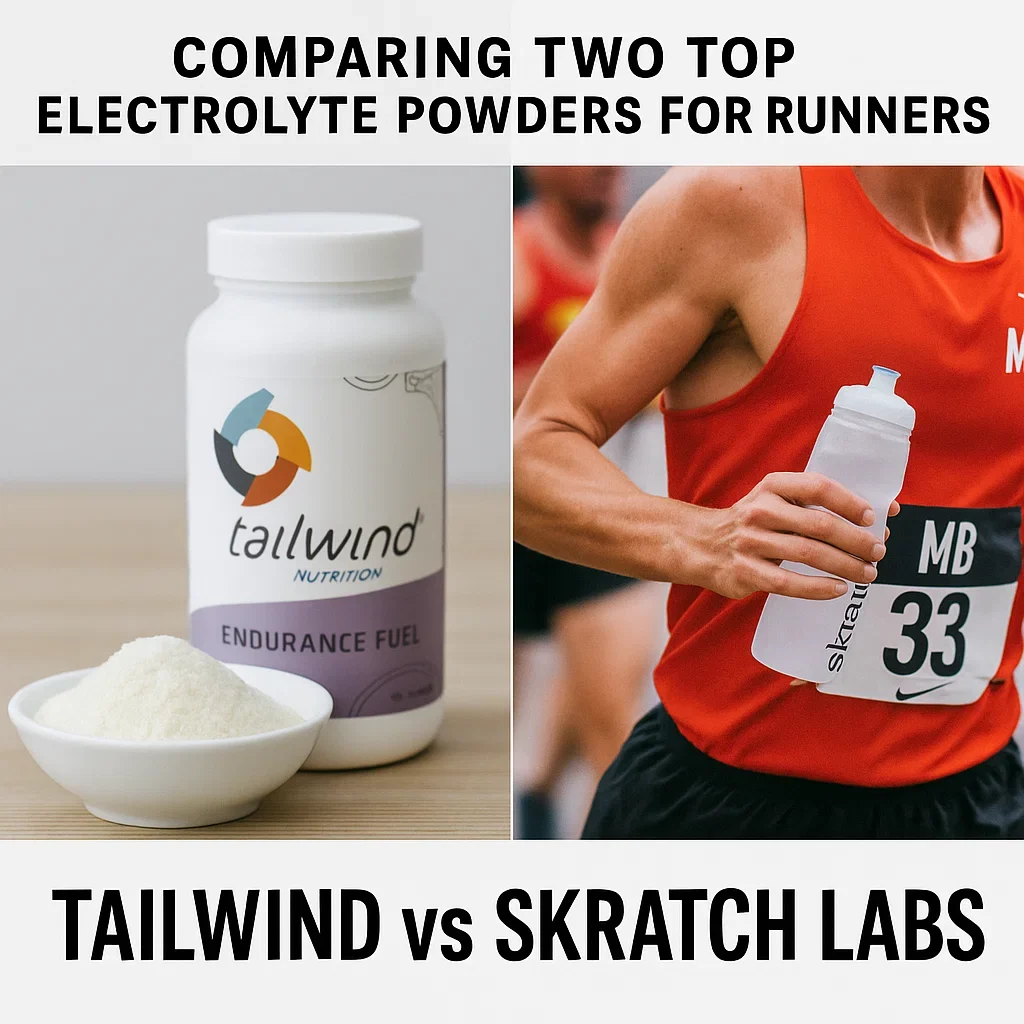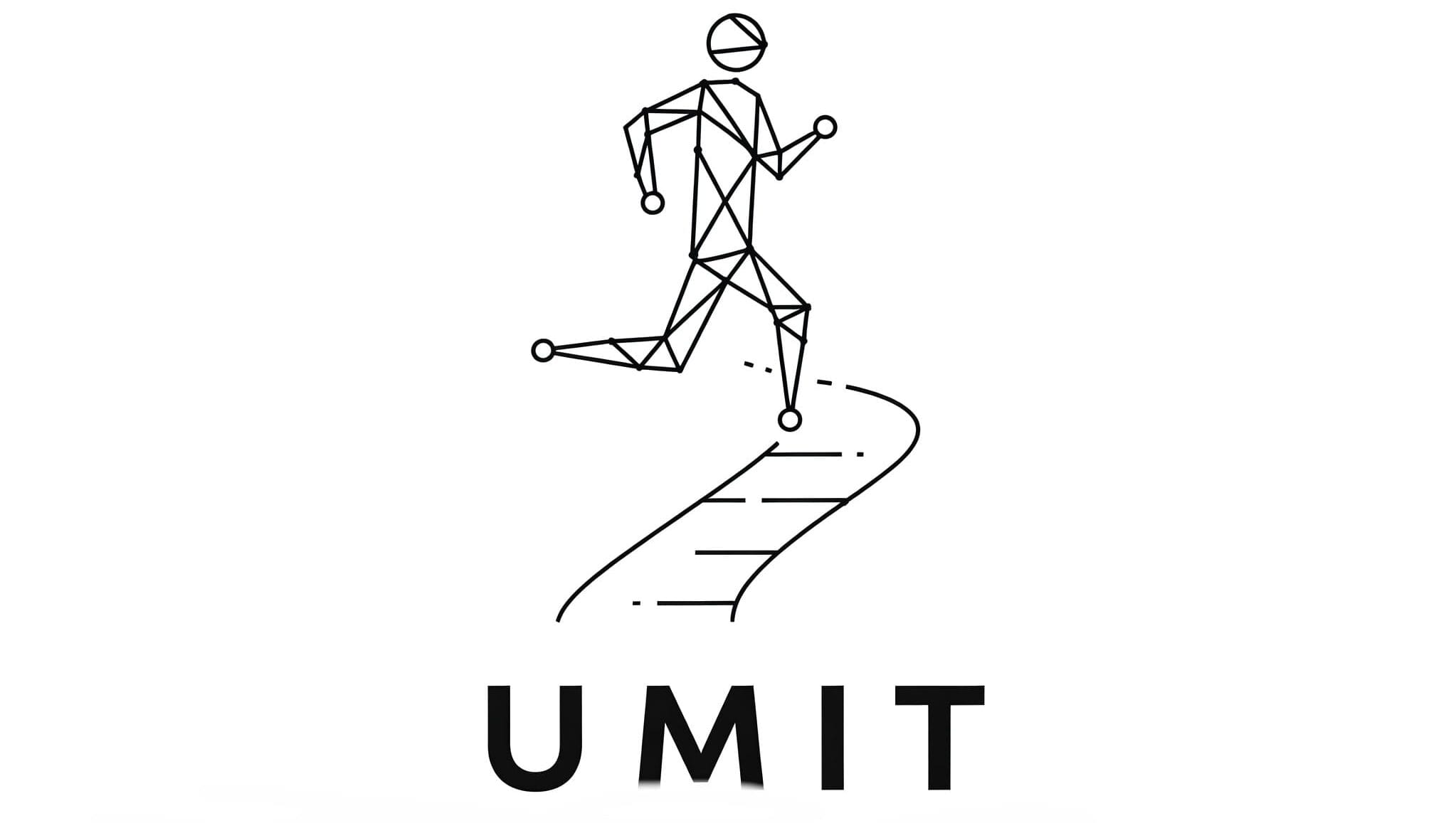🏁 Introduction
Long distance running isn’t just about pace and persistence—it’s a battle of biology. The further you run, the more you push your body’s internal systems to their limits: thermoregulation, fuel metabolism, neuromuscular function, and hydration balance. Among these, the silent saboteur of performance is often ignored—electrolyte loss.
During endurance efforts, your body sheds sodium, potassium, magnesium, and other electrolytes through sweat. These minerals are crucial for muscle contraction, nerve signaling, and fluid retention. Ignore them, and you risk cramps, fatigue, dizziness, or worse—hyponatremia, a condition where sodium levels drop dangerously low due to overhydration with plain water.
And here’s the problem: water alone isn’t enough. It may hydrate, but it doesn’t replenish what you’ve lost. That’s where electrolyte powders come into play.
Today’s endurance athletes face a crowded supplement market. There are tablets, drink mixes, capsules, and high-sodium sticks. Some come packed with carbs and flavor; others focus on purity, portability, or keto-friendly formulas. Products like LMNT, Skratch Labs, Tailwind, and Precision Fuel & Hydration all claim to be the best—but are they right for you?
In this comprehensive guide, we’re diving deep into the science, comparing the top options, and helping you uncover the best electrolyte powder for long distance running based on your goals, your sweat rate, and your stomach.
Whether you’re a first-time marathoner or a seasoned ultrarunner training through blistering heat, this post will help you:
- Understand what electrolytes do and why they matter
- Match specific products to real-world scenarios (heat, duration, fuel needs)
- Avoid common mistakes like overhydration, sugar crashes, or underdosing
- Build a personalized hydration and fueling plan that actually works
Ready to run farther, stronger, and smarter? Let’s find your perfect electrolyte match.
🧪 Why Electrolytes Matter in Long Distance Running
When you run, your body operates like a high-performance engine—generating heat, burning fuel, firing muscles, and managing an intricate network of cellular signals. Central to this system are tiny but essential minerals: electrolytes.
Electrolytes are electrically charged minerals that conduct impulses throughout the nervous system and maintain the fluid balance between cells. The key players in endurance performance include:
- Sodium – Retains water in the bloodstream, supports nerve signals, and prevents muscle cramps.
- Potassium – Helps regulate heartbeat, muscle contractions, and energy production.
- Magnesium – Assists in over 300 enzyme reactions, including muscle repair and ATP generation.
- Calcium – Controls muscle contractions and helps maintain strong bones.
- Chloride – Balances fluids and supports digestion.
During endurance exercise, particularly in hot or humid environments, your body loses these minerals at a rapid pace—primarily through sweat. While water helps replace lost fluids, it doesn’t restore electrolyte balance. In fact, drinking only water over long periods can dilute sodium levels in the blood, leading to hyponatremia—a potentially life-threatening condition marked by nausea, confusion, and, in extreme cases, seizure or collapse.
For most long distance runners, the effects of inadequate electrolyte replenishment are more subtle but still performance-limiting:
- Muscle cramps and twitching
- Headaches, dizziness, and brain fog
- Early onset fatigue
- Sluggish pacing and GI distress
And here’s where things get personal: each runner loses a unique amount of sodium per liter of sweat—ranging from 200 mg to over 1,500 mg. That’s why a one-size-fits-all approach to hydration doesn’t work in endurance sports.
Electrolyte powders allow runners to tailor their intake with precision—adjusting for sweat rate, race duration, climate, and stomach tolerance. They offer an efficient way to replace what’s lost, sustain energy levels, and avoid late-race collapse.
Whether you’re running a fast 10K, a back-to-back long run, or a 100K trail race in the summer heat, understanding how electrolytes function—and why they’re so critical—forms the foundation of any successful endurance fueling strategy.
💦 Electrolyte Loss During Long Runs
It’s no secret that endurance running makes you sweat. But what many runners underestimate is how much they’re sweating—and more importantly, what they’re losing with every drop.
Sweat isn’t just water. It’s a mineral-rich fluid containing sodium, potassium, chloride, magnesium, calcium, and trace elements your body relies on to function under stress. Of these, sodium is the most heavily lost electrolyte, and the most important to replace during long runs.
🔬 How Much Do You Actually Lose?
Sweat rates vary dramatically from one runner to another—anywhere from 0.5 to 2.5 liters per hour depending on intensity, environment, body size, and heat acclimatization. Sodium loss also varies, typically ranging between 300 mg to 1,500+ mg per liter of sweat.
For example:
- A runner sweating 1.5 liters/hour with a sodium concentration of 1,000 mg/L will lose 1,500 mg sodium per hour.
- Over a 3-hour long run, that’s 4,500 mg sodium—nearly double the daily recommended intake.
These numbers aren’t hypothetical. In fact, studies on endurance athletes show that sweat sodium loss is one of the most individual and impactful variables in long-distance performance.
🌡️ Factors That Influence Electrolyte Loss
Several conditions amplify electrolyte depletion during long runs:
- Hot and humid weather increases both sweat volume and sodium concentration.
- High intensity pacing drives up core temperature, triggering earlier and heavier sweat response.
- Inadequate pre-run fueling can compound losses and hasten fatigue.
- Altitude and dry air can cause “invisible sweat” loss even in cool climates.
- Heavy sweaters are at increased risk of cramping and dehydration without proactive electrolyte replacement.
⚠️ Signs You’re Falling Behind
When electrolyte losses outpace intake, symptoms often begin subtly and escalate fast:
- Muscle tightness or twitching
- Nausea or stomach bloating
- Dizziness, fatigue, irritability
- Rapid heart rate, even at easy effort
- Confusion, blurry vision, or chills in later stages
These signs are your body’s emergency signals—warning that electrical and fluid balance is failing. In ultramarathons or races over 90 minutes, this can end your day prematurely—or worse, lead to hospitalization.
Electrolyte loss isn’t guesswork—it’s measurable and manageable. In the next section, we’ll break down how to choose the right electrolyte powder based on your sweat profile, goals, and gut.

🧂 Choosing the Right Electrolyte Powder
Choosing an electrolyte powder might seem simple—until you realize just how many variables matter. Sodium content, carbohydrate load, sugar levels, absorption speed, and even the form factor (tablet, capsule, powder, or ready-to-drink) all affect how your body responds during a long run.
What works for a 5K on a cool day might leave you cramping and nauseous halfway through a humid ultramarathon.
Here’s what to look for when selecting the best electrolyte powder for your needs:
🧪 1. Sodium Content (The #1 Priority)
Sodium is the MVP of endurance electrolytes. It helps your body retain fluid, supports nerve conduction, and keeps your muscles firing.
- Low-sodium products (<300 mg/serving): good for short runs or low-sweaters.
- Moderate-sodium (300–600 mg): best for most runners during moderate efforts.
- High-sodium (800–1,500+ mg): ideal for heavy sweaters, hot weather, or ultra distances.
👉 LMNT and Precision Fuel & Hydration are known for offering high-sodium options tailored to sweat rate testing.
🍯 2. Carbohydrates & Sugar
Some powders include carbs to fuel your performance. Others are sugar-free for minimalist or ketogenic athletes.
- High-carb powders (e.g. Tailwind, Skratch) offer dual function: hydration + fuel.
- Low/no sugar options (e.g. LMNT, Nuun Sport) are great for short sessions, preloading, or carb-conscious runners.
- Be aware: sugar can aid absorption but may cause GI distress in sensitive athletes.
👉 Runners with sensitive stomachs often do better with clean, low-osmolality formulas like Skratch Labs.
💧 3. Osmolality & Absorption Rate
Osmolality refers to how concentrated a drink is. High-osmolality = slower absorption, especially under stress.
- Hypotonic drinks (low osmolality): fast hydration, light flavor. Ideal in hot conditions.
- Isotonic drinks: balance of carbs and electrolytes. Good for fueling and rehydration.
- Hypertonic drinks (dense carb + electrolyte): best post-run or for fueling on the go with water backup.
👉 Precision Hydration and Skratch focus on hypotonic blends that are gentle on the stomach.
🥤 4. Format: Powder, Tablet, Capsule, or Ready-to-Drink?
Each format has pros and cons:
| Format | Pros | Cons |
|---|---|---|
| Powder | Customizable, budget-friendly, fast acting | Requires mixing, not portable on-the-go |
| Tablet | Portable, no mess, easy to use | Limited electrolyte load per tablet |
| Capsule | Fast, no taste, pure electrolyte | No fluids or carbs included |
| RTD (bottle) | Convenient, race-day ready | Heavy, expensive, not adjustable |
👉 Tailwind and Skratch are powders. Nuun and SaltStick offer tablet and capsule forms.
⚖️ 5. Personalization: One Size Doesn’t Fit All
Some brands like Precision Fuel & Hydration offer sweat testing or online quizzes to match sodium needs. Others, like LMNT, offer consistent high-sodium options ideal for self-regulation in hot weather.
👉 If you’re unsure where to start, estimate your sweat rate and sodium concentration using our internal calculator (linked in Further Reading).
🥇 Top Electrolyte Powders for Runners in 2025
With dozens of electrolyte products on the market, knowing which one actually meets the needs of long-distance runners is a game changer. We’ve analyzed leading options across five critical factors:
- Sodium concentration
- Carbohydrate/sugar content
- Digestibility & flavor
- Format (powder, tablet, capsule)
- Best use case (hot weather, long runs, fueling)
📊 Electrolyte Powder Comparison Table
| Brand | Sodium (mg) | Carbs (g) | Sugar (g) | Form | Best For |
|---|---|---|---|---|---|
| LMNT | 1000 | 0 | 0 | Powder | Heavy sweaters, keto, hot climates |
| Skratch Labs Hydration Mix | 380 | 19 | 19 | Powder | Natural fueling, sensitive stomachs |
| Tailwind Endurance Fuel | 310 | 25 | 25 | Powder | All-in-one fueling during ultras |
| Nuun Sport | 300 | <1 | 1 | Tablet | Everyday runs, light flavor, convenience |
| Liquid I.V. | 500 | 11 | 11 | Powder | Recovery hydration, fast absorption |
| Precision Fuel & Hydration | 500–1500 | Varies | Low/0 | Powder | Personalized plans based on sweat rate |
| DripDrop ORS | 330 | 9 | 7 | Powder | Clinical-grade rehydration |
| Ultima Replenisher | 55 | 0 | 0 | Powder | Daily hydration, low-sodium lifestyle |
🔍 Product Highlights & Ideal Use Cases
🧂 LMNT
- Sodium: 1000 mg
- Form: Powder (stick pack)
- Carbs/Sugar: None
- Why Choose It:
Designed for heavy sweaters, high-heat training, and low-carb athletes. It’s brutally salty—best when diluted.
🍓 Skratch Labs Hydration Sport Drink Mix
- Sodium: 380 mg
- Form: Powder
- Carbs: 19g from cane sugar
- Why Choose It:
Known for clean ingredients, natural fruit flavor, and stomach-friendliness. Excellent for daily training and moderate distance efforts.
🥄 Tailwind Endurance Fuel
- Sodium: 310 mg
- Carbs: 25g per scoop
- Use Case:
Combines hydration and calories. Ideal for long trail races, ultras, or fasted runs.
💊 Nuun Sport
- Sodium: 300 mg
- Form: Effervescent tablet
- Carbs/Sugar: Very low
- Why Choose It:
Great for portability, mild taste, and sensitive guts. Doesn’t deliver fuel, but ideal for hydration on the go.
⚡ Liquid I.V.
- Sodium: 500 mg
- Sugar: 11g
- Use Case:
Rehydrates rapidly post-run. High sugar may upset some stomachs mid-run.
🧪 Precision Fuel & Hydration
- Sodium: Customizable up to 1500 mg
- Carbs: Optional, varies by product
- Why Choose It:
Tailored to your sweat test or estimated losses. Trusted in ultra and pro settings.
⚖️ Product Matchups & Runner Use-Cases
Electrolyte powders aren’t one-size-fits-all. Your ideal product depends on your sweat rate, distance, climate, diet, and gut tolerance. To make things simple, we’ve created runner-focused matchups that reflect real-world decisions.
🧂 LMNT vs Nuun Sport
| LMNT | Nuun Sport |
|---|---|
| 1000 mg sodium | 300 mg sodium |
| Zero sugar, keto-friendly | Minimal sugar (1g) |
| Strong salty flavor | Light, fizzy flavor |
| Best for hot weather, heavy sweaters | Best for casual or short runs |
Who wins?
Choose LMNT if you’re a heavy sweater, run in hot climates, or follow a low-carb/keto diet. Go with Nuun if you need something portable, lighter on the gut, or for everyday hydration.
🥄 Tailwind vs Skratch Labs
| Tailwind Endurance Fuel | Skratch Labs Hydration Mix |
|---|---|
| 310 mg sodium, 25g carbs | 380 mg sodium, 19g carbs |
| All-in-one fueling + hydration | Focused on hydration with light carbs |
| Sweeter, stronger taste | Clean, natural taste |
| Can cause flavor fatigue | Easier to sip over long hours |
Who wins?
Use Tailwind when you want to carry fewer items and need both fuel and fluids (like in ultras). Use Skratch when you’re eating separate fuel (like gels) and want a natural, gut-friendly hydration source.
🧬 Precision Fuel & Hydration vs Everyone Else
| Precision Fuel & Hydration | Others |
|---|---|
| Custom sodium dosing (up to 1500mg) | Fixed sodium levels |
| Available with or without carbs | Usually one formula |
| Backed by sweat rate testing | General recommendations |
| Expensive but tailored | More affordable |
Who wins?
If you’re training seriously and want precision for heat, altitude, or race-day optimization, go with PF&H. If you want plug-and-play convenience, other brands work well.
🎯 Scenario-Based Recommendations
| Scenario | Product |
|---|---|
| You sweat a lot in hot weather | LMNT, Precision (high sodium) |
| You need hydration + fuel in one | Tailwind |
| You’re prone to stomach issues | Skratch Labs, Nuun Sport |
| You follow a low-carb diet | LMNT |
| You want precise control | Precision Fuel & Hydration |
| You want a budget option | Nuun Sport, Skratch single sticks |
| You want a recovery drink | Liquid I.V., DripDrop ORS |
Next up: Let’s look at how to time your electrolyte intake for maximum performance and safety before, during, and after your runs.


⏱️ When and How to Use Electrolytes
Timing is everything in endurance running—and that applies to your electrolytes just as much as your pace or fueling plan. When you take them, how much you take, and in what form can dramatically influence performance, gut comfort, and even your ability to finish strong.
Here’s how to integrate electrolyte powders effectively into your training and race-day strategy:
✅ Before Your Run (Preload Strategy)
Taking electrolytes before a run can help you start hydrated and with optimized sodium levels—especially if you expect heavy sweating.
- When? 60–90 minutes before your session
- What to use? A moderate-to-high sodium powder mixed with ~500 ml of water
- Why it works: It increases plasma volume, improves thermoregulation, and may delay the onset of fatigue in hot weather
Many runners preload with LMNT or Precision Fuel & Hydration before long efforts or races, particularly in summer or at altitude.
💪 During Your Run
The longer and hotter your run, the more critical it becomes to replace electrolytes as you go.
- Runs under 60 minutes: Plain water or low-sodium drinks may be fine
- 60–90 minutes: Light electrolyte intake can help maintain balance, especially in warm conditions
- 90+ minutes or hot/humid conditions: Regular electrolyte replacement becomes essential—typically every 30–45 minutes
General guideline:
Aim to take in 300–600 mg of sodium per hour, adjusting based on your sweat rate. Products like Skratch Labs, Tailwind, and Precision Fuel offer easy-to-mix solutions that pair well with sips from a handheld or vest bottle.
If you’re using a fueling product like Tailwind, it covers both carbs and electrolytes—just monitor your total intake so you don’t overload your stomach.
🧊 After Your Run (Recovery Hydration)
Post-run recovery isn’t just about protein and carbs—electrolyte replacement matters too, especially if:
- Your run lasted longer than 90 minutes
- You’re still sweating after you stop
- You’re training again within 24 hours
Using a rehydration-focused powder (like Liquid I.V. or DripDrop) with a mix of sodium and glucose can speed up fluid absorption and help you bounce back faster. Pair it with a salty snack or recovery meal to reinforce balance.
🧠 Pro Tips for Timing Electrolytes
- Don’t wait for cramps—start sipping early
- Avoid “chugging” a full bottle at once; take small, frequent sips
- If you feel bloated or sloshy, reduce fluid volume but keep the sodium
- In cold weather, you may sweat less—but still lose sodium. Don’t skip it entirely.
👃 Flavor, Digestibility & Real Runner Feedback
A product might look great on the label, but if it makes you gag at kilometer 30 or ties your stomach in knots halfway up a climb, it’s not the right choice. For long distance runners, taste and gut tolerance are just as important as sodium concentration or carb content.
Here’s how the most popular electrolyte powders perform when it comes to flavor and stomach friendliness—based on real athlete feedback.
🍓 Skratch Labs Hydration Mix
- Flavor: Natural and light. Comes in fruit-based options like Lemon Lime and Raspberry.
- Digestibility: Widely praised for being gentle on the stomach, even during ultras.
- Notable Feedback: Runners love the clean taste and minimal ingredients. Easy to drink over long hours without flavor fatigue.
🧂 LMNT
- Flavor: Strong and salty. Flavors like Citrus Salt and Watermelon Salt are bold—some runners dilute with extra water.
- Digestibility: Effective but polarizing. Those accustomed to salty drinks love it; others struggle at first.
- Notable Feedback: Great for hot races and heavy sweaters, but some runners find it overwhelming during intense efforts.
🥄 Tailwind Endurance Fuel
- Flavor: Sweet, with mild fruit and berry options. Designed for sipping over hours.
- Digestibility: Mostly well tolerated, but some runners report taste fatigue on ultra distances.
- Notable Feedback: Works great when used as a sole fuel source, but better when alternated with water or plain electrolyte during very long efforts.
💧 Liquid I.V.
- Flavor: Sweet and bold—like a flavored sports drink. Flavors like Passion Fruit and Lemon Lime are common.
- Digestibility: Can cause GI issues for some due to the sugar content (11g per serving).
- Notable Feedback: Popular for recovery or casual hydration, but mixed reviews for use during runs over 90 minutes.
💊 Nuun Sport
- Flavor: Mild and fizzy. Not too sweet. Works well for everyday use and cooler conditions.
- Digestibility: Excellent for most runners. Easy on the gut and doesn’t leave residue.
- Notable Feedback: A favorite among minimalists and those with sensitive stomachs. Some find it lacks punch in very hot or high-output efforts.
🧬 Precision Fuel & Hydration
- Flavor: Mild and customizable—designed to not overpower during long events.
- Digestibility: Very good across a wide range of athletes. Some products are entirely carb-free, others include fueling options.
- Notable Feedback: Often praised for staying “invisible” during long runs—exactly what many runners want.
🧠 Tips from Real Runners
- Rotate flavors if using the same product over long distances
- Test on hard effort days, not just during easy runs
- Match sugar levels to your gut’s preferences—not just performance goals
- Don’t try a new flavor or brand on race day
💰 Price, Availability & Subscription Options
Electrolyte powders vary not just in taste and formulation, but also in price—and that can make a big difference if you’re training daily or prepping for multiple races in a season. Thankfully, most brands offer bulk options, multi-flavor packs, and subscription discounts.
Here’s how the most popular products compare:
💸 Per-Serving Price Breakdown (USD)
| Product | Price / Serving | Notes |
|---|---|---|
| Nuun Sport | ~$0.50 | Budget-friendly, widely available |
| Skratch Labs | ~$0.80 | Clean ingredients, bulk bags available |
| Tailwind Endurance Fuel | ~$0.72 | Combines fuel + electrolytes |
| LMNT | ~$1.50–1.79 | Premium sodium content |
| Liquid I.V. | ~$1.50 | Sweet taste, often sold in big boxes |
| Precision Fuel & Hydration | ~$1.00–$2.00 | Based on custom sodium needs |
| DripDrop ORS | ~$1.00–1.40 | Clinical-grade, often used in recovery |
| Ultima Replenisher | ~$0.45 | Lowest sodium, for light activity |
💡 Note: Prices vary based on quantity, packaging (stick packs vs bulk), and whether you’re buying direct or through Amazon, REI, iHerb, or specialty stores.
🌍 Availability (U.S., UK, EU, Global)
Most top brands are readily available in the U.S. through online platforms, running specialty retailers, and sometimes local pharmacies. Here’s a breakdown of where you can buy:
- Amazon carries nearly all major brands and flavor variants
- Brand websites often offer exclusive bundles or new releases
- Running stores like REI, Running Warehouse, or Wiggle (UK) stock Skratch, Tailwind, and Nuun
- Precision Fuel & Hydration ships internationally and offers sweat test support
- LMNT is available via direct-to-consumer subscription and select gyms/nutrition retailers
- iHerb & Thrive Market offer global shipping on Liquid I.V. and Ultima
If you’re outside the U.S., check for:
- Regional import restrictions on supplements
- Local distributors or resellers (e.g., in the EU or Australia)
- Shipping costs (bulk buys can save, but may trigger duties)
🔁 Subscription Plans & Discounts
Most brands now offer monthly or bi-monthly subscription plans with:
- 10–20% discounts
- Free shipping
- Customizable product selection
- Cancel anytime policies
Popular options:
- LMNT Recharge Club
- Tailwind’s Club Tailwind
- Skratch VIP Program
- Precision Fuel’s Smart Refill Subscription
💡 Cost-Saving Tips
- Try sample packs before committing to full-size orders
- Mix low-sodium and high-sodium products based on training needs
- Watch for Black Friday and seasonal discounts
- Join email newsletters for exclusive codes and early product launches
🧬 Expert Opinions & Scientific Evidence
When it comes to endurance fueling, science is clear: electrolytes—especially sodium—play a crucial role in performance, safety, and recovery. But not all electrolyte needs are the same, and understanding the evidence can help runners make smarter choices, not just trend-based ones.
🧠 What the Experts Say
🥼 Renee McGregor, Sports Dietitian (UK Athletics, Olympic teams)
“Long-distance runners must tailor their electrolyte intake to their sweat rate, race duration, and environment. One-size-fits-all approaches often fall short—especially in hot conditions.”
She recommends starting with 400–600 mg of sodium per hour, adjusting for climate and sweat rate. Products like Precision Fuel & Hydration and Tailwind are often mentioned in her athlete protocols.
🏃 Andy Blow, Founder – Precision Hydration (Ex-pro triathlete)
“Some athletes lose over 2,000 mg of sodium per hour. Without replenishment, hydration strategies fail—leading to cramps, fatigue, or worse.”
Blow emphasizes the need for personalized hydration and offers sweat testing to dial in exact needs. His research supports using higher sodium products like LMNT or Precision’s 1500 mix for salty sweaters.
🧪 Dr. Stacy Sims, Exercise Physiologist
“Women’s hydration needs change across the menstrual cycle. Electrolytes can help offset performance dips when hormones affect fluid balance.”
This supports using consistent low-sugar electrolytes like Skratch Labs or Nuun, particularly during high-hormone phases.
📚 Scientific Studies & Findings
- GSSI (Gatorade Sports Science Institute):
Found that runners with adequate sodium intake had better fluid retention, fewer cramps, and improved thermal regulation during long events.
Link: gssiweb.org – Sweat rate & sodium - Journal of the International Society of Sports Nutrition (2023):
Concluded that a minimum of 500 mg sodium/hour reduced the risk of hyponatremia and improved cognitive clarity in endurance athletes. - PubMed Review (2024):
Systematic review of 23 studies confirmed that electrolyte-containing drinks improve time to exhaustion and reduce perceived exertion, especially in hot climates.
🧪 Field Data: Real Runners, Real Results
Surveys from Reddit’s r/running, iRunFar athlete interviews, and YouTube ultramarathon vlogs show:
- LMNT: Often praised for preventing cramps in hot, high-output conditions
- Skratch Labs: Preferred for sensitive stomachs and long sipping sessions
- Tailwind: Considered a “lifesaver” in 50K–100M races where food isn’t tolerated
- Nuun: Most popular for daily use and mild workouts
- Liquid I.V.: Great for fast post-run recovery, not ideal mid-race for many
These firsthand accounts, paired with expert-backed strategies, form a complete picture:
👉 Electrolyte powders aren’t just helpful—they’re essential for smart, sustainable endurance performance.

🏁 Final Verdict: What to Choose Based on Your Needs
The best electrolyte powder isn’t about trends or brand popularity—it’s about what works best for your body, your sweat, and your goals. Whether you’re a salty sweater, a stomach-sensitive runner, or someone training in extreme heat, there’s an option out there that matches your needs.
Here’s a practical guide based on real-world scenarios:
🔥 You Sweat a Lot or Run in Hot Weather
- Choose: LMNT or Precision Fuel & Hydration (high-sodium options)
- Why: They offer 1000–1500 mg sodium per serving, critical for avoiding cramps, fatigue, or hyponatremia
- Tip: Start with one serving per hour in hot conditions and adjust as needed
⛰️ You’re Training for an Ultramarathon or Long Trail Race
- Choose: Tailwind Endurance Fuel or Skratch Labs
- Why: Tailwind provides fuel + electrolytes, while Skratch pairs well with solid food or gels
- Tip: Use over multiple hours to reduce the need for separate fuel and hydration plans
🧠 You Have a Sensitive Stomach
- Choose: Skratch Labs or Nuun Sport
- Why: Light flavor, natural ingredients, and minimal sugar make them easy to sip all day
- Tip: Test during long tempo runs or back-to-back sessions to assess tolerance
🍳 You Follow a Low-Carb or Keto Diet
- Choose: LMNT
- Why: Zero carbs, zero sugar, high sodium. Ideal for preloading or fueling without breaking dietary structure
- Tip: May taste salty—try diluted in more water if the flavor is too strong
🛠️ You Want a Custom Hydration Plan
- Choose: Precision Fuel & Hydration
- Why: Offers tailored sodium levels and a free sweat loss calculator to personalize intake
- Tip: Use their online test or partner testing centers for accurate dosing
🧳 You Need Something Affordable and Easy
- Choose: Nuun Sport or Ultima Replenisher
- Why: Budget-friendly, portable, and available in most running shops or online platforms
- Tip: Great for casual runners or as a backup in your training bag
🧊 You’re Looking for a Recovery Option
- Choose: Liquid I.V. or DripDrop ORS
- Why: Glucose + sodium combo promotes rapid rehydration post-run
- Tip: Add to your post-run shake or sip with your recovery meal
🏁 Final Verdict: Choose the Right Electrolyte Powder for Your Needs
When it comes to endurance, hydration isn’t just about replacing fluids—it’s about keeping your body’s electrical system in balance. Whether you’re a salty sweater, a clean-fuel enthusiast, or someone with a sensitive stomach, there’s an electrolyte powder designed for you.
For hot climates and long races, LMNT and Precision Fuel & Hydration offer high-sodium performance. If you prefer natural ingredients and lighter flavors, Skratch Labs delivers hydration with a gentle touch. Need fuel and fluids in one? Tailwind simplifies your strategy for ultras and back-to-back sessions.
But don’t just follow the crowd—listen to your body. Test your plan during long runs, adjust for sweat rate and climate, and dial in what works best. With the right product and timing, you’ll go farther, recover faster, and stay safer.
If you’re ready to level up your performance, explore the best electrolyte powders for runners and craft a hydration strategy that supports every step of your journey.
❓ Frequently Asked Questions
🏃 What makes electrolyte powders different from sports drinks?
Electrolyte powders typically allow for more precise dosing of sodium and other minerals, with options for low or zero sugar. Sports drinks often contain more sugar and less sodium per serving.💧 How much sodium do I need during a long run?
Most runners benefit from 300–600 mg of sodium per hour. Heavy sweaters or runners in hot weather may need up to 1000–1500 mg/hour.🌡️ Should I use electrolytes in cold weather too?
Yes. While sweat rates may decrease, sodium loss still occurs. Under-hydrating in cold, dry air is also a common problem.🥤 Can I mix electrolyte powders with energy gels?
Yes, but monitor total carb and sodium intake to avoid GI issues. Many runners alternate: gels for carbs, powders for hydration.🧂 Is LMNT too salty for everyone?
LMNT is strong, but not “too salty” if you’re a heavy sweater or training in the heat. Some runners dilute it with extra water.🧪 What is a sweat rate test?
It’s a method to calculate how much fluid and sodium you lose per hour. Some brands offer personalized tests or online calculators.💥 Do electrolytes help prevent cramps?
In many cases, yes—especially if cramps are related to sodium loss. But muscle fatigue and poor conditioning can also be factors.🚫 Can I drink too many electrolytes?
Yes. Overloading sodium without adequate fluid or over short durations may cause bloating or stomach upset. Stick to guidelines and test in training.📦 Can I travel with electrolyte powders?
Yes. Stick packs and tablets are TSA-compliant and great for race travel or trail adventures.🧠 Do electrolytes improve mental focus?
Yes—especially when running long distances. Proper hydration supports brain function, reaction time, and decision-making under stress.⏳ When should I start sipping during a run?
Begin within the first 30–45 minutes of effort, especially in heat or races over 90 minutes.🌱 Are electrolyte powders vegan?
Most are vegan, but always check the label for ingredients like collagen or animal-derived sweeteners.🚽 Why do some powders upset my stomach?
It could be high sugar content, artificial ingredients, or overconcentration. Try diluting or switching to a cleaner formula.🧃 Can I take electrolytes without eating?
Yes, but if the powder includes carbs, it may spike blood sugar. Some athletes pair electrolytes with a small snack on long runs.🧊 Can I use electrolyte powders in cold water?
Yes—though some dissolve better in warm water. Shaking or stirring well helps.🧃 Is it okay to use electrolyte drinks on rest days?
Yes, especially if you’ve lost fluids from heat, travel, or previous hard sessions. But no need to overdo it.📏 What’s the best way to test tolerance?
Try different brands during long runs or back-to-back workouts. Monitor taste, gut response, and energy levels.🎯 Should I alternate brands/flavors in races?
You can. Many runners rotate Skratch, Tailwind, or Nuun flavors to prevent taste fatigue during long ultras.🔬 Do electrolyte needs change with altitude?
Yes. Dry air increases fluid loss, and respiration rates rise. Hydration with sodium becomes even more important at elevation.🧴 Are electrolyte capsules as good as powders?
Capsules work well for targeted sodium intake but lack fluids and carbs. They’re great for flexible dosing or when drinking is limited.📚 Further Reading
- 📄 Electrolyte Balance and Performance – PubMed Review
- 🏥 Electrolytes Overview – Cleveland Clinic
- 🧠 Sweating Rate & Sodium Loss – Gatorade Sports Science Institute
- 📘 Physiological Role of Electrolytes – Physiopedia
- 🔬 Top Electrolyte Products for Runners – Verywell Fit
- 🧪 Best Electrolyte Tablets – Runner’s World
🧠 Quick Quiz: Are You Electrolyte-Smart?
- Which electrolyte is most important for fluid retention during long runs?
- A) Potassium
- B) Magnesium
- C) Sodium
- D) Calcium
- What’s the typical range of sodium loss per liter of sweat?
- A) 100–300 mg
- B) 300–1500 mg
- C) 1500–2500 mg
- D) Over 3000 mg
- Which product combines both carbohydrates and electrolytes in one mix?
- A) LMNT
- B) Nuun Sport
- C) Tailwind Endurance Fuel
- D) DripDrop
- True or False: You only need electrolytes during summer runs.
- A) True
- B) False
- Which brand is best known for customizable sodium levels based on sweat tests?
- A) Liquid I.V.
- B) Precision Fuel & Hydration
- C) Skratch Labs
- D) Ultima Replenisher
- What’s a smart time to start sipping electrolytes during a long run?
- A) After 90 minutes
- B) During the last 10K
- C) Within the first 30–45 minutes
- D) Only if you cramp
✅ Quiz Answers
- 1. C) Sodium
- 2. B) 300–1500 mg
- 3. C) Tailwind Endurance Fuel
- 4. B) False
- 5. B) Precision Fuel & Hydration
- 6. C) Within the first 30–45 minutes
📢 Share Your Results or Save This Guide
📕 Recommended Books
-
The Endurance Diet – By Matt Fitzgerald
Learn how elite endurance athletes fuel for long races with strategic carbohydrate and electrolyte use. Practical, research-based insights. -
ROAR – By Dr. Stacy Sims
A revolutionary approach to nutrition and hydration tailored to female endurance athletes, based on hormone cycles and real physiology. -
Eat and Run – By Scott Jurek
A memoir-meets-manual by a vegan ultrarunner legend. Combines storytelling with real advice on fueling, training, and mental endurance. -
Waterlogged – By Dr. Tim Noakes
Challenges mainstream hydration myths and explores the risks of overhydration and hyponatremia. A must-read for ultra-distance athletes.
🎥 Video Suggestions
Female-Specific Exercise & Nutrition
Dr. Stacy Sims discusses how female physiology affects training and hydration strategies.
How Much Fluid & Sodium Do You Need?
Andy Blow explains sweat rates and sodium replacement for endurance athletes.
Running Tip: Do You Need Electrolytes?
Insights on when and why runners should consider electrolyte supplementation.
Do You Really Need to Drink Electrolytes?
Exploring the necessity of electrolyte drinks for various types of athletes.

About the Author
Lost Pace is an ultramarathon runner, shoe-tester and the founder of umit.net. Based year-round in Türkiye’s rugged Kaçkar Mountains, he has logged 10,000 + km of technical trail running and completed multiple 50 K–100 K ultras.
Blending mountain grit with data, Lost analyses power (CP 300 W), HRV and nutrition to craft evidence-backed training plans. He has co-written 260 + long-form guides on footwear science, recovery and endurance nutrition, and is a regular beta-tester of AI-driven coaching tools.
When he isn’t chasing PRs or testing midsoles, you’ll find him sharing peer-reviewed research in plain English to help runners train smarter, stay healthier and finish stronger.
Ultrarunner · Data geek · Vegan athlete

